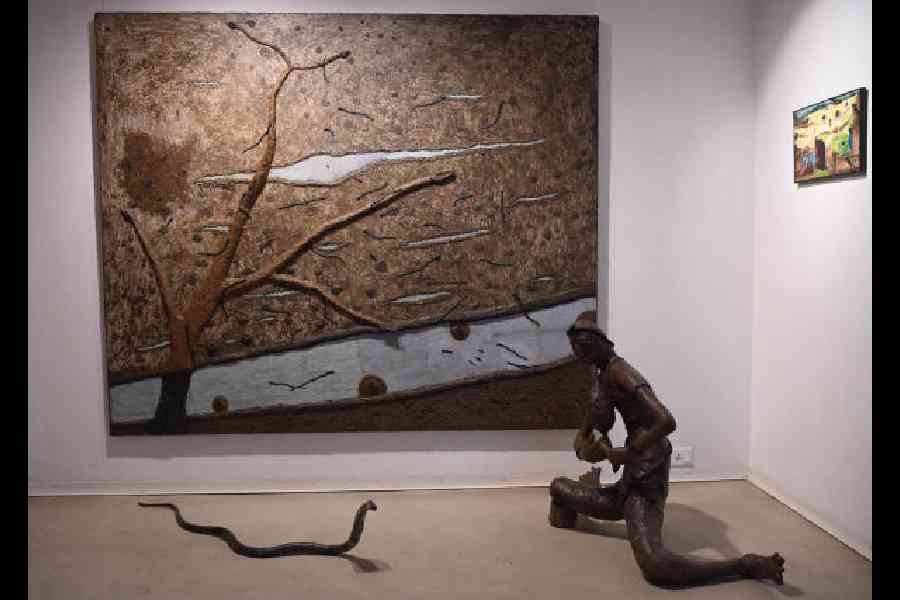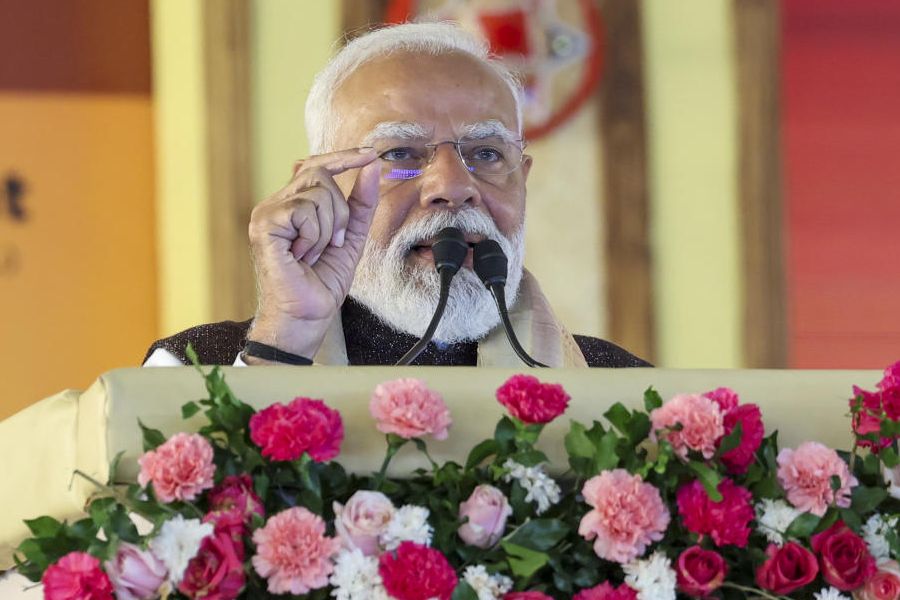When Georges Braque spotted some wood-grain wallpaper in a Parisian shop front and instinctively bought it and then stuck it onto some of his charcoal drawings, he could not have imagined that he was creating an art form that would send ripples across continents. What he did know was that the combined tactility and visuality of his ‘papier collé’ created a rupture, a jolt for the viewer. It certainly jolted his colleague, Pablo Picasso, who went on to make nearly a hundred papier collés in quick succession. This papier collé technique is what evolved into the art form we now know as collage. From the Russian Suprematists and the European Dadaists to Surrealists and the American modernists, collage became an avant-garde medium to challenge the boundaries of art.

For Shakila Sheikh, though, the medium was a matter of convenience. The daughter of a vegetable vendor, Shakila turned to collage-making because scraps of paper were cheaper and more easily accessible than paint. Despite her lack of formal education or training in art, Shakila is the true embodiment of what the artist, John Stezaker, meant when he said, “Collage allows the opening up of conscious...” At the exhibition, Shakila: A Retrospective (ongoing at CIMA Gallery), viewers are treated to the full spectrum of this artist’s instinctive artistic brilliance.
The foremost example of her keen eye for detail lies in how she uses the grain of the paper — the direction of the fibre in a sheet of paper — to add textural depth to her works. Laser printing on glossy paper yields a smooth surface and reflects light: Shakila uses it extensively to create the sky and negative space backgrounds. The moiré pattern created in some kind of prints — newspapers, for instance — is far more textured and is used deftly in her works to add details that seem almost three-dimensional: a gamchha on the shoulder of a man feeding birds, the magnificently patterned body of a deer, the undulating, rocky-muddy ground on which an ascetic is seated. It does not end there: in carefully cut spheres to indicate fruits, one can spot eyebrows that have now become the stem of the melons, or the legs of footballers standing in a row for the anthem are cut off from the knees and turned upside down to make fences. Fragments of the body — navels, eyes, skin, breasts — torn from the gloss of magazines and the glare of posters are woven into landscapes that are situated far from the dazzle they once belonged to. Like a miniature painting, her canvases hide multiple stories in the same frame which unfold as the eye travels across the pieces.
Despite threats from religious fundamentalists of all shades, the goddess, Kali, appears repeatedly in her works. Shakila captures the goddess in all her bold and capricious beauty, arming her with everything — from a flute to a cricket bat. Shakila’s intricate montages of everyday images, fleeting and fragmentary, have a racy colloquialism about them.
Her life and art are the subject of the documentary, Shakila: The Collage of Struggle, being shown at CIMA Gallery today from 5 pm.











